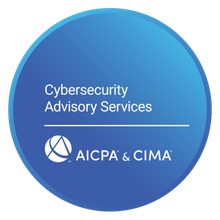Creating a WISP to Safeguard Client Data in Tax Preparation
As tax preparation businesses handle sensitive client information, creating a WISP, or Written Information Security Plan, is essential to mitigate cyber threats and data breaches. A tailored cybersecurity plan including risk management, data backups, employee training, and other best practices can reduce the risk of cyber attacks, meet the IRS data security requirements, and protect sensitive client data.
In this article, we will provide a step-by-step guide on how to create a written information security plan (WISP) for your tax preparation business. From conducting a comprehensive risk assessment to developing policies and procedures for employee access and use of sensitive data, we will cover all the essential elements of a successful WISP. We will also discuss the importance of implementing cybersecurity software and tools, providing ongoing employee training and awareness programs, testing and evaluating your WISP, and staying up-to-date on the latest cybersecurity threats and best practices.
Understanding the Importance of a Cybersecurity Plan for Tax Preparation Businesses
As tax preparation businesses handle sensitive client information, they become more susceptible to cyber threats and data breaches. The IRS requires tax preparers to have a Written Information Security Plan (WISP) in place to safeguard sensitive data. A WISP is a document that outlines the security policies and procedures that a business has in place to protect their data. By implementing best practices and guidelines for risk management, data backups, and employee training, tax preparers can significantly reduce their risk of cyber attacks and meet the IRS data security requirements.
Creating a comprehensive cybersecurity plan for your tax preparation business is crucial to prevent the theft of client data, which could result in legal penalties, loss of reputation, and a loss of business. By conducting a thorough risk assessment and implementing a WISP, tax preparers can ensure that their data is protected against cyber attacks. In this article, we will provide a step-by-step guide on how to create a cybersecurity plan for your tax preparation business, including risk assessment, data backups, employee training, and more.
Conducting a Comprehensive Risk Assessment
Conducting a comprehensive risk assessment is a critical step in developing an effective cybersecurity plan for tax preparation businesses. It involves evaluating all the potential risks that could impact the security of sensitive data and identifying vulnerabilities that cybercriminals can exploit. By conducting a thorough risk assessment, tax preparers can gain a clear understanding of their current security posture and determine areas where improvements are needed.
A risk assessment typically involves an evaluation of a business's network and IT infrastructure, including hardware, software, and systems used for data storage and processing. Tax preparers should also evaluate their employees' roles and access to sensitive data, as well as any third-party vendors or contractors who have access to their systems. This evaluation can help identify potential risks and vulnerabilities in the system, such as outdated software or hardware, weak passwords, or inadequate access controls.
Once risks are identified, tax preparers can develop a plan to mitigate them and prioritize which risks need to be addressed first. They should also identify which risks can be accepted and which require additional resources to address. By conducting regular risk assessments, tax preparers can continuously monitor their security posture and make adjustments as necessary to protect against new threats or vulnerabilities.
Conducting a comprehensive risk assessment is a crucial step in developing a successful cybersecurity plan for tax preparation businesses. It enables tax preparers to identify potential risks and vulnerabilities, prioritize their response, and make the necessary changes to reduce the likelihood of a data breach or cyber attack.
Creating a Data Backup and Recovery Plan
Creating a data backup and recovery plan is a critical component of any tax preparation business's cybersecurity plan. In today's digital age, data is the lifeblood of a business, and a single cyber attack can result in significant data loss. That's why it's crucial to have a data backup and recovery plan in place to minimize the impact of a data breach.
To create a data backup and recovery plan, tax preparers need to identify the types of data that are critical to their business operations. This could include financial records, client information, tax returns, and other sensitive data. Once the critical data has been identified, the tax preparer should determine the frequency and method of backing up the data. Some businesses opt for daily backups, while others prefer weekly or monthly backups. Additionally, the method of backing up the data can vary, including cloud-based solutions, physical hard drives, or a combination of both.
It's also important to have a plan in place for data recovery. In the event of a data breach, businesses need to be able to quickly recover their data to avoid any long-term impact on their operations. This involves having a well-defined process for restoring data backups and ensuring that the restored data is accurate and up-to-date.
Overall, a data backup and recovery plan is essential for any tax preparation business that handles sensitive client information. By having a plan in place, businesses can quickly recover from a cyber attack or data breach and minimize any long-term damage.
Developing Policies and Procedures for Employee Access and Use of Sensitive Data
Developing policies and procedures for employee access and use of sensitive data is crucial to ensuring that tax preparation businesses are protected against data breaches and cyber attacks. Tax preparers need to take appropriate steps to secure sensitive client information from insider threats, as well as external threats.
One essential component of employee access controls is implementing passwords and two-factor authentication. These measures ensure that only authorized employees can access sensitive data. Role-based access controls are also important, as they limit access to sensitive data only to those employees who need it to perform their job duties. Tax preparers should also establish protocols for revoking access to sensitive data when an employee leaves the company or no longer requires access.
Furthermore, tax preparers should establish guidelines for handling and storing sensitive data. These guidelines should include best practices for password management, encryption, and data storage. Regular training on these guidelines and policies is also crucial to ensure that employees are aware of their responsibilities in safeguarding sensitive data.
Developing policies and procedures for employee access and use of sensitive data is a critical element of a comprehensive cybersecurity plan for tax preparation businesses. By implementing appropriate access controls, restrictions, and guidelines, tax preparers can significantly reduce their risk of data breaches and cyber attacks.
Implementing Cybersecurity Software and Tools
Implementing cybersecurity software and tools is a crucial aspect of protecting a tax preparation business from cyber threats. The IRS has established six security standards that businesses should adhere to in order to comply with their data security requirements. These standards include access control, information protection, incident response, security management, data loss prevention, and system maintenance. Implementing cybersecurity software and tools can help businesses achieve compliance with these standards.
One of the most significant advancements in cybersecurity software in recent years is endpoint detection and response (EDR) and managed detection and response (MDR). EDR and MDR solutions work by continuously monitoring endpoints, such as computers and mobile devices, for suspicious activity. They can identify and respond to threats in real-time, minimizing the risk of a successful cyber attack.
In addition to EDR and MDR, firewalls, antivirus and anti-malware software, and intrusion detection and prevention systems are essential tools for any cybersecurity plan. Firewalls serve as a barrier between a business's network and the internet, while antivirus and anti-malware software can detect and remove malicious software. Intrusion detection and prevention systems monitor network traffic and alert businesses to any unusual activity, allowing them to take action before a cyber attack occurs.
It is essential to evaluate cybersecurity software and tools based on your specific needs and risk assessment. For example, if your business processes a large volume of sensitive data, it may be necessary to invest in advanced intrusion detection and prevention software. Regular maintenance and updates to these tools are also necessary to ensure they are functioning properly and providing optimal protection.
Implementing cybersecurity software and tools is critical for protecting tax preparation businesses from cyber threats. Adhering to the IRS's security six compliance standards and considering the use of modern solutions like EDR and MDR can significantly reduce the risk of a cyber attack. Careful evaluation of the specific needs and risk assessment of your business can help identify the most effective software and tools for your cybersecurity plan.
Providing Ongoing Employee Training and Awareness Programs
Employee training and awareness are critical components of any cybersecurity plan. It's important to recognize that training should not be a one-time event. Ongoing training and awareness programs can help reinforce the importance of cybersecurity best practices and keep employees up-to-date on the latest threats and vulnerabilities.
One effective way to provide ongoing training and awareness is to establish a comprehensive training program that covers all aspects of your Written Information Security Plan (WISP). A WISP is a document that outlines the security policies and procedures that a business has in place to protect their data. By developing a WISP training program, you can ensure that employees fully understand the policies and procedures outlined in the plan.
The training program should be tailored to the unique needs of your business and its employees. It should cover topics such as password management, data classification, and how to handle sensitive data. Employees should also be trained on how to identify potential cybersecurity threats and how to respond to them. For example, if an employee receives a suspicious email, they should know how to report it to their supervisor or IT department.
Regular training sessions should be conducted to ensure that employees stay up-to-date on the latest cybersecurity threats and best practices. The frequency of these training sessions will depend on the size and complexity of your business. Monthly or quarterly training sessions can be effective for many businesses.
It's important to track employee participation in training programs and ensure that all employees receive the necessary training. Training records should be maintained and regularly reviewed to identify any gaps in training or areas where additional training is needed. By providing ongoing employee training and awareness programs, tax preparation businesses can greatly reduce the risk of cyber attacks and data breaches.
Testing and Evaluating Your WISP
Once your Written Information Security Plan (WISP) is in place, it's crucial to test and evaluate its effectiveness on a regular basis. This can help identify any weaknesses or vulnerabilities in your plan and enable you to make any necessary adjustments to improve its effectiveness.
One of the most important aspects of testing and evaluating your WISP is to ensure that all policies and procedures are being enforced effectively. Regular internal audits and reviews of access logs can help identify any potential threats or breaches before they cause significant damage.
Additionally, it's essential to carry out specific parts of the WISP in the event of a cyber breach to ensure that the plan is effective in practice. For example, if a breach occurs, the WISP should outline specific steps to take, such as immediately disconnecting affected systems, notifying clients, and reporting the breach to the appropriate authorities. By carrying out these steps, you can help minimize the damage caused by a cyber attack and prevent it from spreading further.
It's also important to periodically assess and update your WISP to ensure that it remains effective against emerging threats and vulnerabilities. As technology evolves and cybercriminals develop new attack methods, your cybersecurity plan must adapt to keep pace. Regular reviews of your WISP can help identify any areas that require improvement and allow you to update your policies and procedures accordingly.
Testing and evaluating your WISP is a crucial step in maintaining the security of your tax preparation business and protecting your clients' sensitive information. By regularly reviewing and updating your plan, enforcing policies and procedures, and carrying out specific steps in the event of a breach, you can help minimize the risk of a cyber attack and protect your business from potential harm.
Staying Up-to-Date on the Latest Cybersecurity Threats and Best Practices
Cybersecurity threats are constantly evolving and becoming more sophisticated, making it crucial for tax preparation businesses to stay up-to-date on the latest threats and best practices. Keeping track of the latest trends and best practices can help businesses implement effective cybersecurity plans to protect their clients' sensitive information.
One way to stay informed is by regularly checking the IRS's website for updates and guidance on data security best practices. The IRS provides helpful resources and guidelines on how to protect sensitive client data, and it's important for businesses to implement any new recommendations or requirements as they arise.
Industry groups and cybersecurity conferences are also excellent resources for staying informed about the latest trends and best practices. Attending these events can provide valuable insights into new threats and emerging technologies to help businesses stay ahead of potential cyber attacks.
Regularly reviewing and updating your cybersecurity plan is also essential to staying ahead of potential threats. As technology evolves and new threats emerge, businesses need to ensure that their plans remain effective and up-to-date. This can involve evaluating the effectiveness of existing security measures and making necessary adjustments to improve their overall security posture.
Staying informed about the latest cybersecurity threats and best practices is critical for tax preparation businesses to protect their clients' sensitive information and maintain their reputation. By regularly reviewing and updating their cybersecurity plans, businesses can stay ahead of potential threats and reduce the likelihood of a successful cyber attack.
Key Takeaways for Developing a Strong Written Information Security Plan
In summary, tax preparation businesses must prioritize cybersecurity to protect their clients' sensitive data and prevent cyber attacks. To develop a strong written information security plan, they should conduct a comprehensive risk assessment, create a data backup and recovery plan, develop policies and procedures for employee access and use of sensitive data, implement cybersecurity software and tools, provide ongoing employee training and awareness programs, test and evaluate the plan, and stay up-to-date on the latest threats and best practices.
By following these tips and regularly reviewing and updating their plan, tax preparation businesses can stay ahead of cyber threats and ensure the security of their clients' sensitive information. Remember, cybersecurity is an ongoing process, and staying vigilant is crucial to maintaining a strong and effective cybersecurity plan. For help, contact a security specialist who will be happy to assist you.






